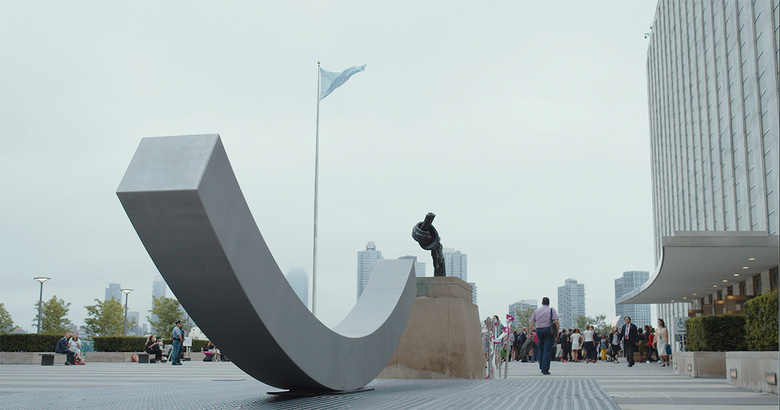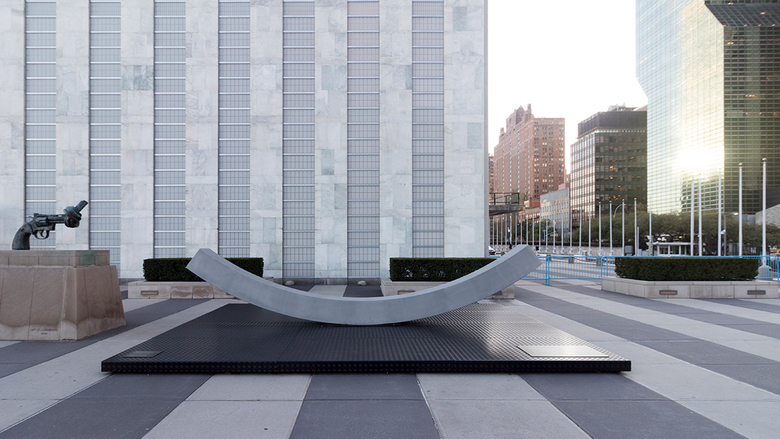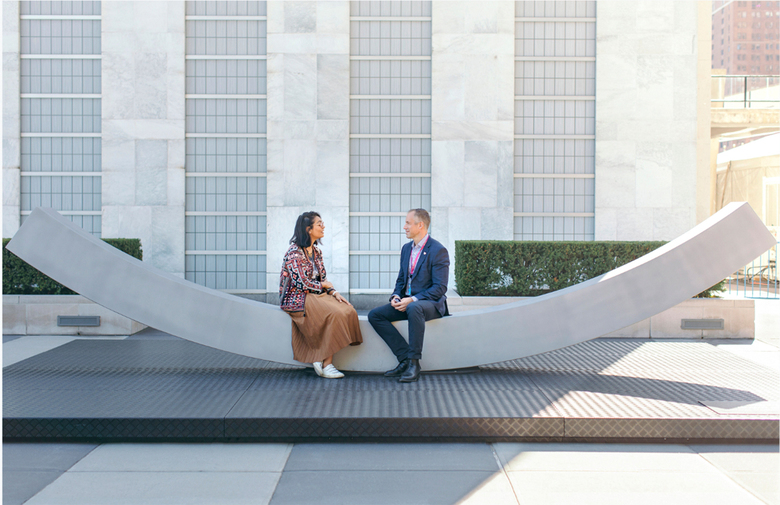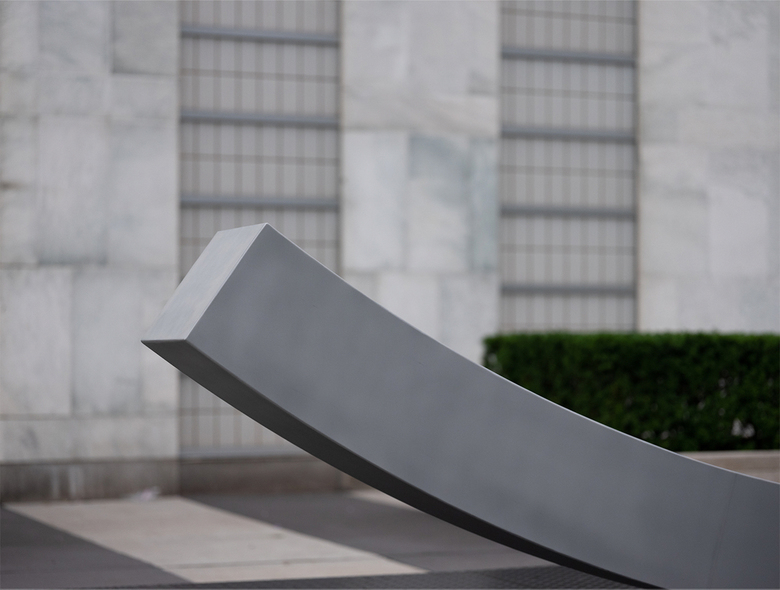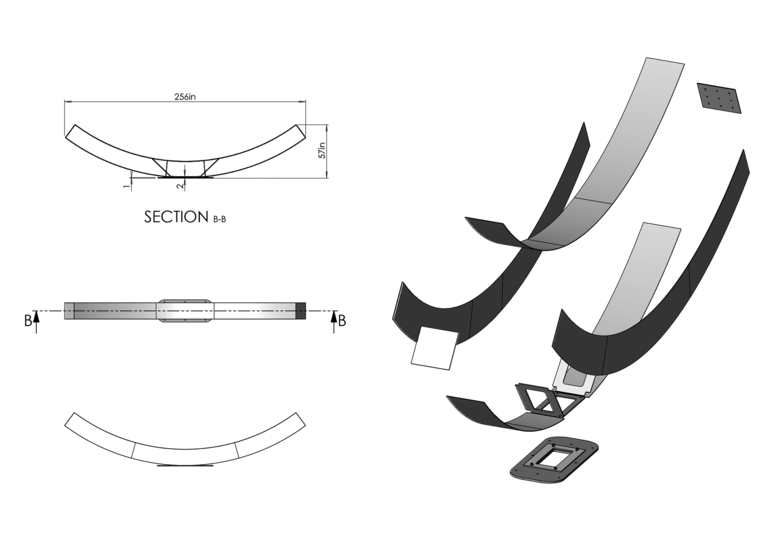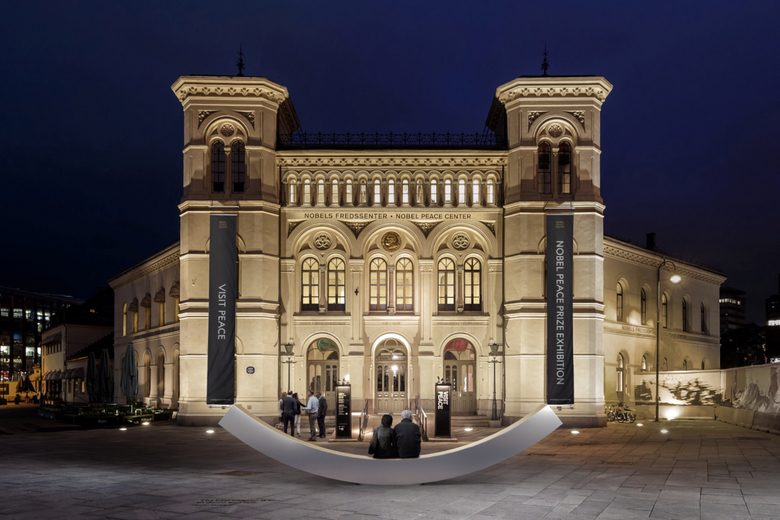An Aluminum Smile
A curved bench with the name "The Best Weapon" was recently on display at the entrance to the United Nations in New York City. Coinciding with the 74th session of the UN General Assembly, the bench invited dignitaries to heed Nelson Mandela's advice and "sit down and talk."
Location: United Nations, New York City (October 2019); Nobel Peace Center, Oslo, Norway (future installation)
Client: Nobel Peace Center
Designer: Snøhetta
Manufacturer: Vestre
Material: Anodized aluminum
Aluminum Supplier: Hydro
On Friday, October 18, "The Best Weapon" was packed into a crate and shipped back to Norway, where it should have a permanent home in front of the Nobel Peace Center, the institution that commissioned the bench. Sited next to Carl Fredrik Reuterswärd's Non-Violence, a permanent artwork that depicts an oversized gun with a knotted barrel, "The Best Weapon" was a temporary resident on the UN plaza, unveiled on July 18, Nelson Mandela International Day. The bench was a symbol of peaceful negotiation, of Mandela's statement written on the bench's base: "The best weapon is to sit down and talk." Accordingly, the design by Snøhetta forced people — even those who don't get along — to sit next to each other in the relatively level mid-section. But the bench was more than an expression of those words by Mandela, who would have turned 100 last year; it was the embodiment of sustainable principles in materials and manufacturing.
In addition to the Nobel Peace Center and Snøhetta, "The Best Weapon" involved the participation of two more parties from Oslo: outdoor furniture manufacturer Vestre and aluminum manufacturer Hydro. Vestre is no stranger to New York or Snøhetta, though, as their furniture graces the architects' makeover of Times Square after portions of it were converted from automobile to pedestrian use. At the UN plaza, Vestre worked with Snøhetta and Hydro to create a 21-foot (6.5-meter) long anodized aluminum bench that integrates 9 of the UN's 17 sustainable development goals. Most directly applicable is Goal #12: "Ensure sustainable consumption and production patterns." Per Vestre, the "steel and aluminum used is the cleanest in the world with 30% less carbon emissions than the world average and 50% less than the U.S." Furthermore, the company offset the carbon emissions from shipping the bench back and forth from Norway.
The partial-circle bench was built as a square tube with a steel structure covered by an aluminum skin. The minimal vertical steel supports are located at the base, in the center of the bench. The sides and top of the bench are made of three aluminum plates welded together, their seams barely visible when World-Architects saw it in person last week. The bottom of the bench was made from four plates, thicker for additional strength. The entire bench was anodized by Hydro at their plant in Sweden after it was built by Vestre in Norway with aluminum supplied by Hydro (the trans-Scandinavian voyage was necessary due to the size of the bench and the location of the large "bath" needed to anodize it). The anodization means the bench's surface was a bit rough to the touch. But that surface treatment should ensure longevity once it arrives back in Oslo and "smiles" upon the Nobel Peace Center.
